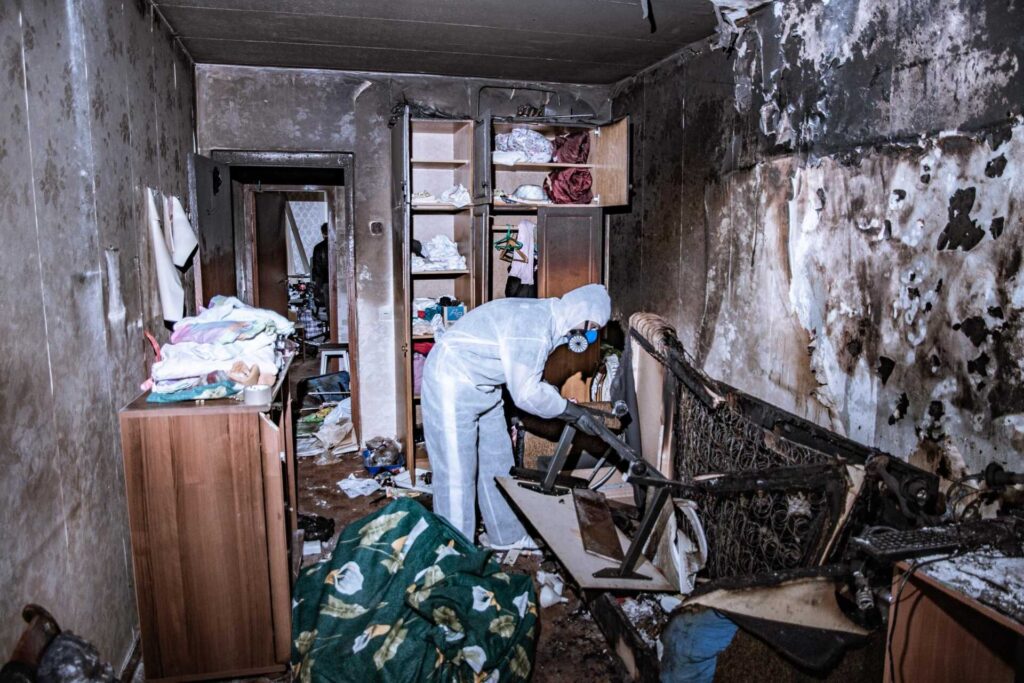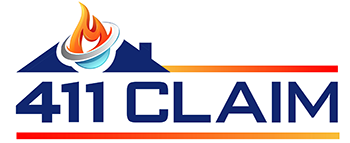
Contents
When dealing with fire damage, you need a systematic approach to guarantee a safe and effective cleanup. Start by evaluating the extent of the damage while wearing protective gear to shield yourself from potential hazards. Next, you’ll want to focus on specialized techniques for removing soot and smoke. Understanding these best practices is vital for restoring your space properly, but there’s more to take into account when it comes to rebuilding affected areas effectively.
Key Takeaways
- Conduct a thorough damage assessment, documenting structural, smoke, and water damage for insurance claims and to guide cleanup efforts.
- Utilize appropriate cleaning techniques, such as dry cleaning for soot and water-based solutions for walls, to effectively remove smoke damage.
- Prioritize safety by wearing protective gear during cleanup and avoiding hazardous areas and materials.
- Engage experienced professionals for restoration, ensuring they adhere to local building codes and regulations.
- Foster community support by sharing experiences and encouraging collective rebuilding efforts for emotional resilience.
Assessing the Damage and Ensuring Safety
Before diving into the cleanup process after a fire, it’s crucial to assess the damage and guarantee everyone’s safety.
Start with a thorough damage evaluation of your property. Look for structural issues, smoke damage, and areas affected by water used to extinguish the fire. Make sure to wear protective gear, including gloves and masks, as you inspect the site.
Safety precautions are paramount; avoid areas that seem unstable and don’t attempt to handle hazardous materials alone. If the damage appears extensive, it’s wise to consult professionals who can provide expert guidance and support.
Take notes and photographs to document the damage, as this will be essential for insurance claims.
Effective Soot and Smoke Removal Techniques
Once you’ve assessed the damage and confirmed everyone’s safety, the next step is tackling soot and smoke removal.
Start with dry cleaning methods, using a vacuum with a HEPA filter to collect loose soot particles.
For walls and ceilings, a mixture of water and a specialized cleaner can work wonders; scrub gently to avoid damaging surfaces.
When dealing with upholstery, use a foam cleaner designed for smoke damage. Test any cleaning solution on a hidden area first to verify it won’t cause discoloration.
Don’t forget about the air; using an air purifier can help eliminate lingering odors.
In more severe cases, you might need to enlist professionals who specialize in soot removal.
Remember, successful cleanup not only restores your space but also helps you reclaim your peace of mind.
Taking these steps thoroughly will help you move forward and find comfort within your home again.
Restoring and Rebuilding Affected Areas
As you begin restoring and rebuilding the areas affected by fire damage, it’s crucial to prioritize structural integrity and safety. Start by evaluating the damage thoroughly; enlist professionals if necessary to guarantee you don’t overlook critical issues.
When selecting rebuilding strategies, consider using fire resistant materials like treated wood, concrete, and metal. These materials not only enhance safety but also provide peace of mind for you and your loved ones.
Develop a clear plan that outlines each phase of the restoration process. This includes securing permits and adhering to local building codes.
Engage with experienced contractors who understand fire damage and can guide you through the complexities of rebuilding.
Finally, foster a sense of community by sharing your journey with neighbors who may have faced similar challenges. Their support can be invaluable as you create a safe, resilient space to call home once again.
To Sum Up
In the aftermath of a fire, envision transforming the charred remnants into a safe, welcoming space once again. By meticulously evaluating the damage, removing soot, and engaging skilled professionals, you can breathe life back into your home. Picture the air cleared of smoke, surfaces gleaming, and sturdy, fire-resistant materials standing strong. Following these best practices not only restores your sanctuary but also guarantees that it’s fortified against future threats, allowing you to embrace peace of mind.
Recent Posts
Pricing Insights for Damage Restoration Services
When unexpected events disrupt your life, steering through the costs of damage restoration can feel
Budgeting for Blaze Cleanup: A Trusty Guide
Budgeting for blaze cleanup is like steering through a maze—complex and overwhelming but attainable with
Top Storm Damage Repair Techniques for Homeowners
When storms release their fury, the aftermath of storm damage can feel overwhelming, much like
